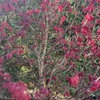Shade tree suggestions for heavy clay soil?
larjoranj
16 years ago
Featured Answer
Sort by:Oldest
Comments (16)
quirkyquercus
16 years agoquirkyquercus
16 years agoRelated Professionals
Forest Park Landscape Architects & Landscape Designers · Medford Landscape Contractors · Placerville Landscape Contractors · Ronkonkoma Landscape Contractors · West Haverstraw Landscape Contractors · Eau Claire Siding & Exteriors · Kennewick Siding & Exteriors · Panama City Siding & Exteriors · North Richland Hills Siding & Exteriors · Crystal Lake Decks, Patios & Outdoor Enclosures · Dracut Decks, Patios & Outdoor Enclosures · Grand Rapids Decks, Patios & Outdoor Enclosures · La Palma Decks, Patios & Outdoor Enclosures · St. Louis Decks, Patios & Outdoor Enclosures · Dent Stone, Pavers & Concreteschmoo
16 years agomichman
16 years agokatrina1
16 years agoquirkyquercus
16 years agordak
16 years agomichman
16 years agojqpublic
16 years agodctreenut
16 years agolarjoranj
16 years agokatrina1
16 years agoconifers
16 years agocascadians
16 years agoconifers
16 years ago
Related Stories

GARDENING GUIDESGardening Solutions for Heavy Clay Soils
What’s a gardener to do with soil that’s easily compacted and has poor drainage? Find out here
Full Story
GARDENING GUIDESHow to Stop Worrying and Start Loving Clay Soil
Clay has many more benefits than you might imagine
Full Story
GARDENING GUIDESGardening Solutions for Dry, Sandy Soils
Has your desert or beachy site withered your gardening creativity? Try these ideas for a beautiful, easy-care landscape
Full Story
GARDENING GUIDESHow to Pick a Mulch — and Why Your Soil Wants It
There's more to topdressing than shredded wood. Learn about mulch types, costs and design considerations here
Full Story
GARDENING GUIDESInvite Cellophane Bees to Your Garden by Providing Patches of Bare Soil
Look for cellophane bees (Colletes) pollinating flowering trees and shrubs in U.S. gardens this spring
Full Story
GARDENING GUIDESHave Acidic Soil in Your Yard? Learn to Love Gardening Anyway
Look to acid-loving plants, like conifers and rhododendrons, to help your low-pH garden thrive
Full Story
GARDENING GUIDES5 Prairie Wildflowers That Can Heal Your Soil
Get free, organic soil fertilizer with nitrogen-pumping plants that draw pollinators too
Full Story
LANDSCAPE DESIGN7 Great Trees for Summer Shade and Fall Color
These landscape-pro faves straddle the seasons beautifully. Could one enhance your own yard?
Full Story
GARDENING GUIDES10 Solutions for Soggy Soil
If a too-wet garden is raining on your parade, try these water-loving plants and other ideas for handling all of that H2O
Full Story
LANDSCAPE DESIGNGreat Design Plant: Retreat to the Shade of Hardy Catalpa
Big foliage and a towering height provide a shady respite in summer, but that's not all hardy catalpa offers dedicated gardeners
Full StorySponsored
Columbus Area's Luxury Design Build Firm | 17x Best of Houzz Winner!
More Discussions








larjoranjOriginal Author